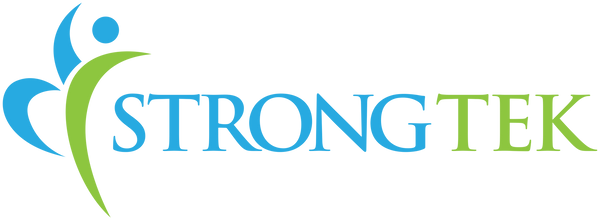You’ve probably heard it before—“Don’t skip your stretches.” But when time is tight or you’re focused on bigger goals like building strength or burning calories, stretching tends to get pushed to the side. What many people don’t realize is that improving your mobility and flexibility isn't just for dancers or yoga lovers—it’s one of the most effective ways to boost performance, reduce pain, and prevent injuries over the long term.
The key? It’s not just about stretching more, it’s about stretching smarter.
With the right tools and techniques, you can target tight areas more effectively, deepen your range of motion, and support your joints in a way that feels good now and helps your body move better later. And the best part? You don’t have to be an expert to start.

Why Mobility and Flexibility Matter
Mobility and flexibility are often used interchangeably, but they serve slightly different purposes:
- Flexibility is your muscles’ ability to lengthen.
- Mobility is your joints’ ability to move through their full range of motion.
Both play a huge role in how well you move. Whether you’re getting out of bed, squatting at the gym, or reaching for something on a high shelf, your body needs freedom and control to move without strain.
When you don’t work on flexibility and mobility regularly, you’re more prone to tight muscles, poor posture, and limited movement patterns—all of which increase your risk of injury. Stretching smart is about maintaining function as much as it is about feeling good.
The Benefits of Using Tools in Your Stretch Routine
While bodyweight stretching is a great starting point, incorporating simple tools can help you:
- Access deeper stretches without forcing your body
- Hold positions more comfortably for longer periods
- Target hard-to-reach areas like hips, calves, or the upper back
- Build consistency with tools that support daily practice
Using the right equipment gives you better feedback, added support, and often leads to faster progress—especially if you’re dealing with muscle stiffness or recovery from injury.

1. Slant Boards: For Ankles, Calves, and Hamstrings
Slant boards are one of the most underrated tools for improving lower body mobility. These sturdy, angled platforms are designed to stretch the calves, hamstrings, and ankles, helping to improve dorsiflexion (the range of motion in your ankle joint). Better ankle mobility supports better squat form, posture, and balance.
Slant boards are commonly used in physical therapy and sports training to prevent or rehabilitate Achilles tendon issues, plantar fasciitis, or shin splints. Tools like the StrongTek Wooden Slant Board are built to last and adjustable to meet your flexibility level.
A few minutes a day standing on a slant board—especially after a workout or long period of sitting—can make a noticeable difference in how your legs and hips feel.
2. Stretch Blocks and Yoga Bricks: Support for Deeper Mobility
Stretching should never be about forcing your body into uncomfortable positions. That’s where blocks and bricks come in handy. These tools help support your weight during stretches, making it easier to maintain proper alignment and hold positions longer without strain.
For example:
- Use a block under your hips during a pigeon stretch to reduce pressure.
- Place blocks under your hands during forward folds to avoid rounding your spine.
- Support your knees or ankles in seated poses to stay comfortable longer.
Whether you’re working on hip openers or hamstring flexibility, blocks allow you to customize each stretch to your current mobility, making your routine safer and more effective.

3. Balance Pads and Rocker Boards: Movement-Based Mobility
Stretching isn’t always about holding still. Some of the best mobility work happens through controlled, dynamic movement. That’s where balance-focused tools come into play.
Using a rocker board or balance pad challenges your stability while gently encouraging joint activation and full-body awareness. This type of “active mobility” work improves proprioception, strengthens the small stabilizing muscles, and makes your stretches more functional.
Try:
- Slow hip circles while standing on a balance pad
- Ankle mobility drills on a rocker board
- Gentle lunges with your front foot elevated on a soft pad
Tools like StrongTek’s balance pads and rocker boards are ideal for warmups, cool-downs, or even adding movement during work breaks to keep the body loose and engaged.
4. Massage Balls and Foam Rollers: Release Before You Stretch
Stretching tight muscles is good. Releasing tension before you stretch is even better. That’s where massage balls and foam rollers shine. These tools help break up knots and tight fascia (the connective tissue surrounding muscles), making it easier for your body to move freely.
Use them to:
- Target trigger points in your glutes, calves, or upper back
- Loosen up quads and hamstrings before deeper stretching
- Improve blood flow to sore areas post-workout
Spending just 5 minutes on a roller before stretching can significantly increase your range of motion—and help your muscles relax more quickly.

Stretching Smarter Starts with the Right Tools
You don’t need to spend hours stretching or be ultra-flexible to make real progress. With the right tools and a few minutes of focused effort each day, you can unlock better movement, prevent injuries, and feel more in tune with your body.
At StrongTek, we’re all about functional, practical solutions to help you move better—whether you're recovering from an injury, warming up before a workout, or just looking for ways to stay active at home. Our mobility tools are built for everyday use and trusted by physical therapists, athletes, and anyone who simply wants to feel better in their body.
Ready to stretch smarter? Explore our most-loved mobility and flexibility tools here and take the first step toward better movement.
